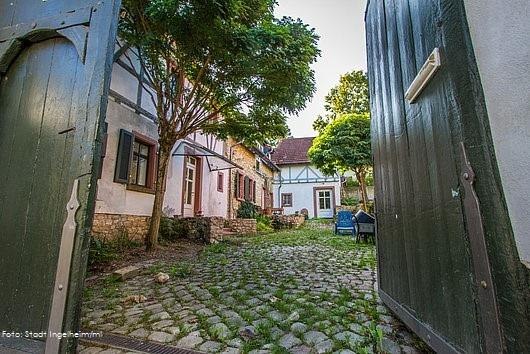The building fabric of the property largely dates from the middle of the 19th century. The massive brick ground floor and the half-timbered upper floor of the residential building are typical for the location. This house comprised six living rooms. The outbuildings were built exclusively of rubble stone. The courtyard is accessed via the gateway with large wooden wings. The owner of the building at that time was Nikolaus Kloos, a municipal collector. In 1849 he replaced Johann Heinrich Klippel in office as the first democratically minded mayor. Between 1840 and 1860 he also appeared as the keeper of the municipal bull. A cross-vaulted cattle shed with a cast-iron centre pillar still survives. His son, the surveyor and farmer Jakob Kloos, was also mayor from 1876 to 1902.
Incidentally, the farming community with about 650 inhabitants had a considerable livestock in the mid-19th century: 55 horses, 4 bulls, 40 oxen, 210 cows, 150 cattle, 142 pigs and 10 goats.

searchMenu
